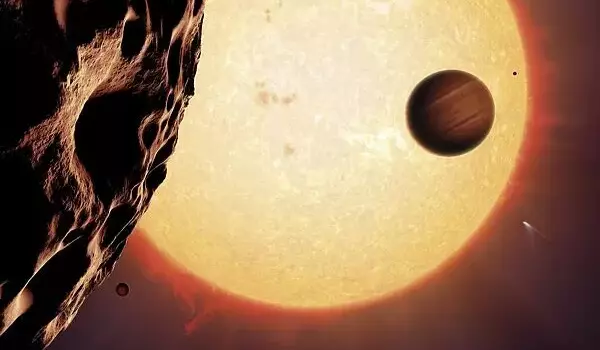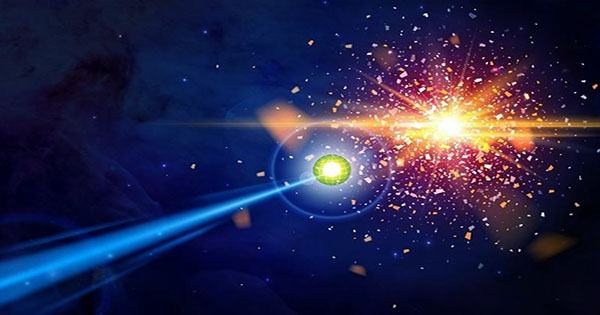Upsilon Andromedae (υ Andromedae) is a binary star system located approximately 44 light-years away from Earth in the constellation Andromeda. It is visible to the naked eye as a faint star with a magnitude of 4.1. The system consists of an F-type main-sequence star and a smaller red dwarf.
As of 2010, four extrasolar planets are thought to orbit Andromedae A (designated Upsilon Andromedae b, c, d, and e; the first three named Saffar, Samh, and Majriti, respectively). All four are most likely jovian planets of comparable size to Jupiter. This was the first multiple-planet system discovered in a multiple-star system, as well as the first multiple-planet system discovered around a main-sequence star.
The system consists of two Sun-like stars, designated Upsilon Andromedae A and Upsilon Andromedae B, that orbit each other every 1.4 days. These two stars are separated by only about 0.06 astronomical units (AU), which is about 9 million kilometers (5.6 million miles), or 6% of the distance between the Earth and the Sun.

Nomenclature
The Bayer designation for the system is υ Andromedae. The two components are designated A and B according to the rules for naming objects in binary star systems. The first planet discovered orbiting υ Andromedae A should be designated Andromedae Ab under the same rules. Though this more formal form is sometimes used to avoid confusion with the secondary star υ Andromedae B, it is more commonly known as υ Andromedae b. In order of discovery, the other planets discovered were designated υ Andromedae c, d, and e.
The innermost planet, Upsilon Andromedae b, is a gas giant with a mass about 0.69 times that of Jupiter, and orbits its host star every 4.6 days. The middle planet, Upsilon Andromedae c, is also a gas giant with a mass about 1.98 times that of Jupiter, and orbits its host star every 241.3 days. The outermost planet, Upsilon Andromedae d, is a gas giant with a mass about 4.13 times that of Jupiter, and orbits its host star every 1,291 days.
Stellar system
The parallax of Upsilon Andromedae A was measured by the Gaia astrometry satellite to be 74.19 milliarcseconds, corresponding to a distance of 13.49 parsecs from the Solar System (44 light-years). Upsilon Andromedae A, located about 10 degrees east of the Andromeda Galaxy, has an apparent magnitude of +4.09, making it visible to the naked eye even in moderately light-polluted skies.
In addition to the two stars, Upsilon Andromedae is also known to have at least three exoplanets orbiting around Upsilon Andromedae A. These planets were the first multi-planet system discovered around a main-sequence star other than our own Sun.
















